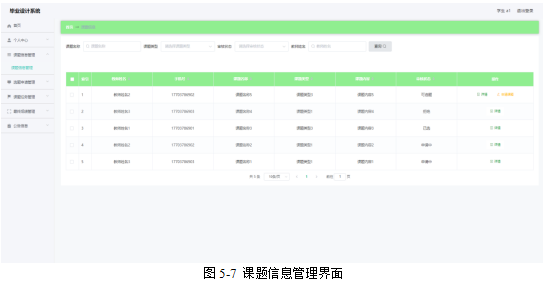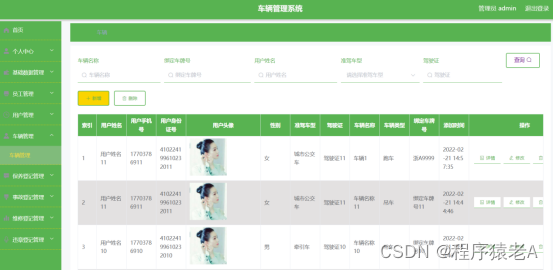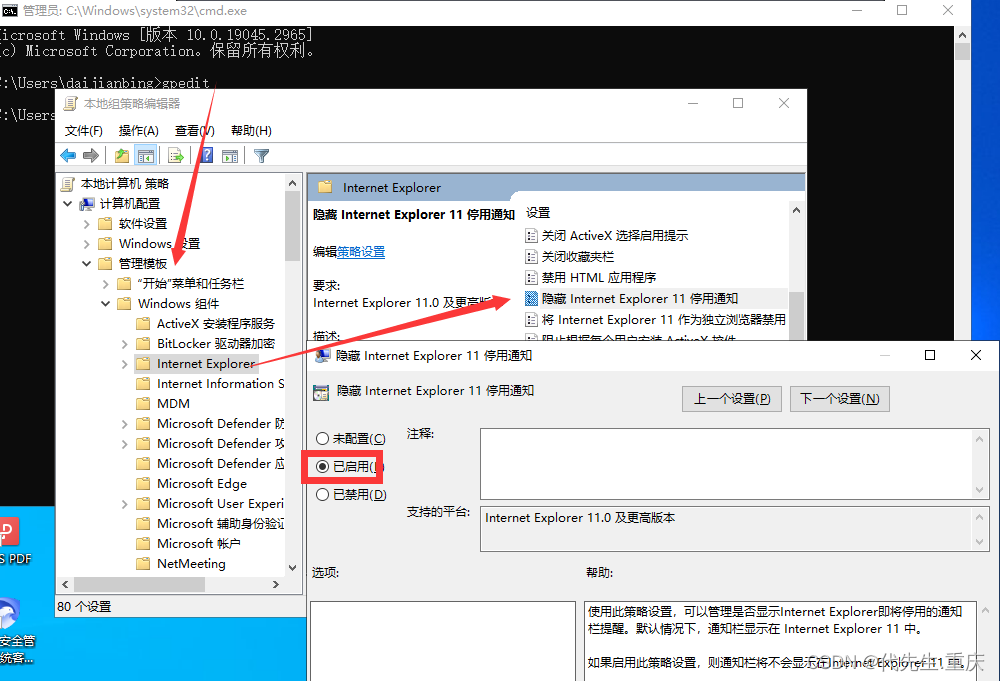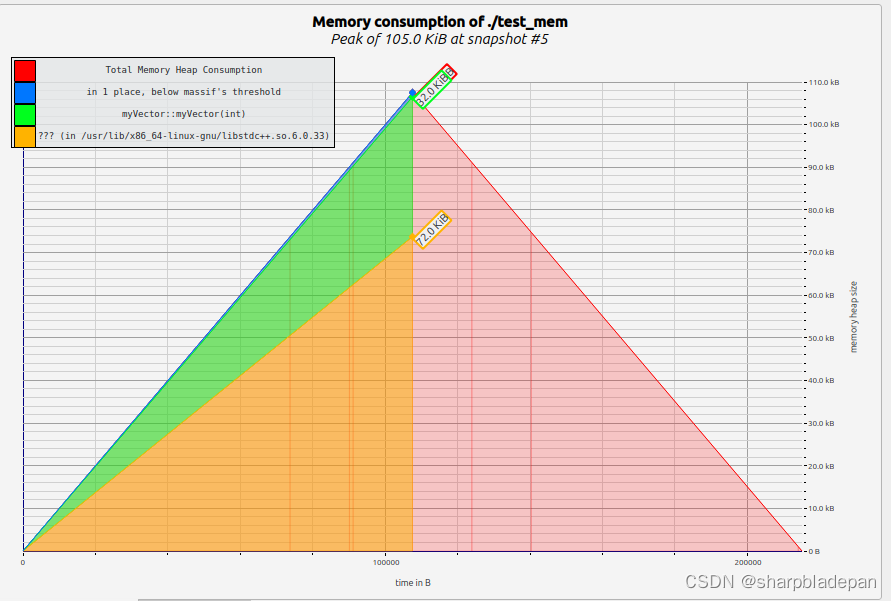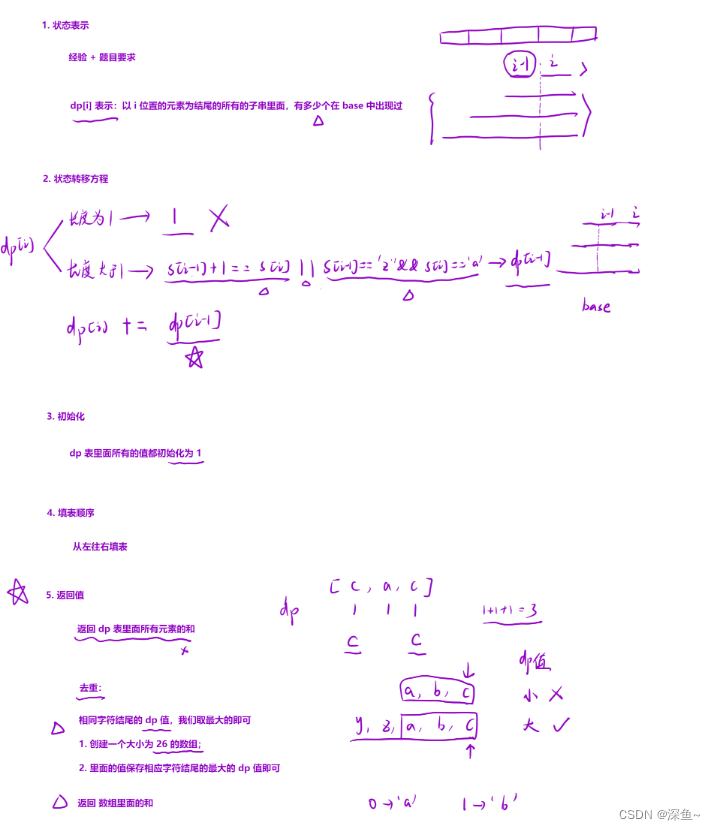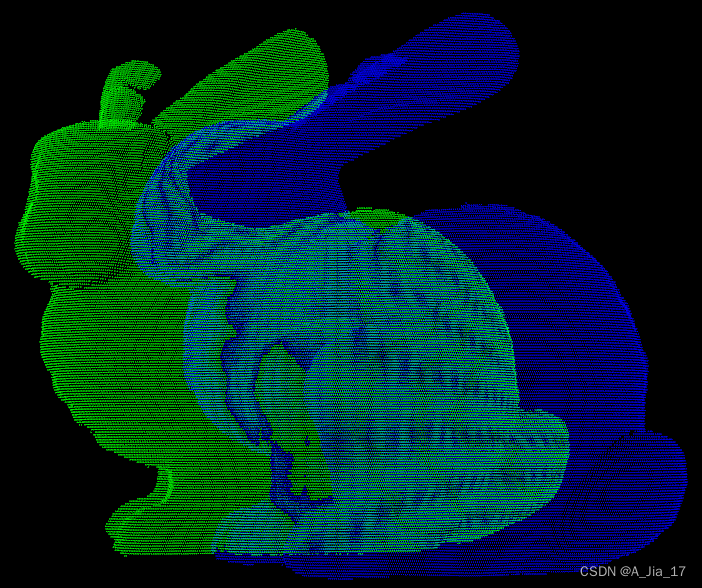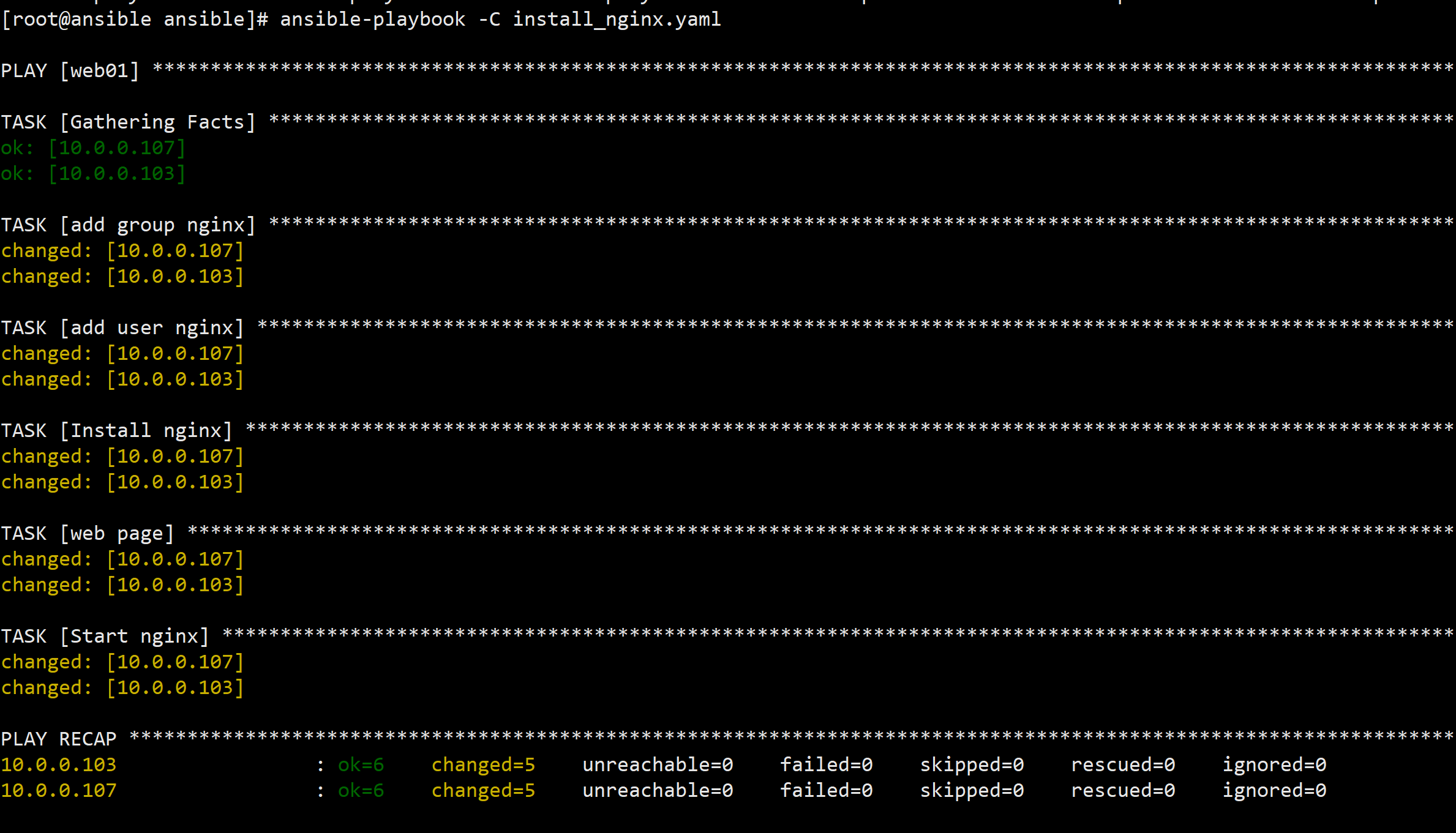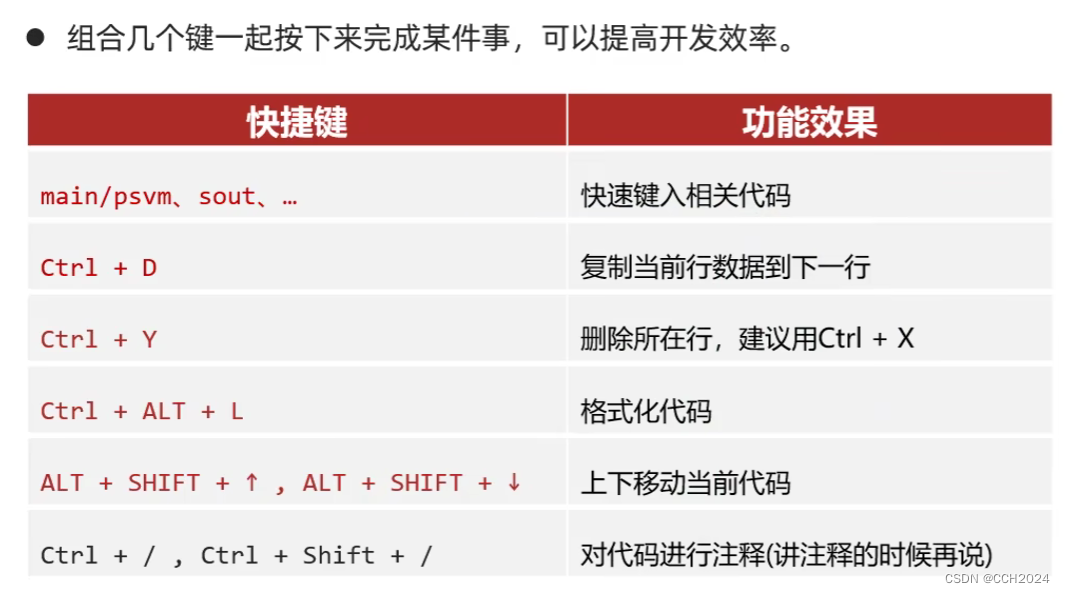IoC的概念和作用
在介绍Ioc之前,我们首先先了解一下以下内容
什么是程序的耦合
耦合性(Coupling),也叫耦合度,是对模块间关联程度的度量。耦合的强弱取决于模块间接口的复杂性、调用模块的方式以及通过界面传送数据的多少。模块间的耦合度是指模块之间的依赖关系,包括控制关系、调用关 系、数据传递关系。模块间联系越多,其耦合性越强,同时表明其独立性越差( 降低耦合性,可以提高其独立 性)。
在软件工程中,耦合指的就是就是对象之间的依赖性。对象之间的耦合越高,维护成本越高。因此对象的设计应使类和构件之间的耦合最小。软件设计中通常用耦合度和内聚度作为衡量模块独立程度的标准。划分模块的一个 准则就是高内聚低耦合。
分类:
- 内容耦合: 当一个模块直接修改或操作另一个模块的数据时,或一个模块不通过正常入口而转入另一个模块时,这样的耦合被称为内容耦合。内容耦合是最高程度的耦合,应该避免使用之。
- 公共耦合: 两个或两个以上的模块共同引用一个全局数据项,这种耦合被称为公共耦合。在具有大量公共耦合的结构中,确定究竟是哪个模块给全局变量赋了一个特定的值是十分困难的。
- 外部耦合: 一组模块都访问同一全局简单变量而不是同一全局数据结构,而且不是通过参数表传递该全局变量的信息,则称之为外部耦合。
- 控制耦合: 一个模块通过接口向另一个模块传递一个控制信号,接受信号的模块根据信号值而进行适当的动作,这种耦合被称为控制耦合。
- 标记耦合: 若一个模块 A 通过接口向两个模块 B 和 C 传递一个公共参数,那么称模块 B 和 C 之间存在一个标记耦合。
- 数据耦合: 模块之间通过参数来传递数据,那么被称为数据耦合。数据耦合是最低的一种耦合形式,系统中一般都存在这种类型的耦合,因为为了完成一些有意义的功能,往往需要将某些模块的输出数据作为另一些模块的输入数据。
- 非直接耦合: 两个模块之间没有直接关系,它们之间的联系完全是通过主模块的控制和调用来实 现的。
耦合是影响软件复杂程度和设计质量的一个重要因素,在设计上我们应采用以下原则:
如果模块间必须存在耦合,就尽量使用数据耦合,少用控制耦合,限制公共耦合的范围,尽量避免使用内容耦合。
程序的耦合指的是程序之间的依赖关系。 主要包括:类之间的依赖和方法间的依赖。 而解耦指的就是降低程序间的依赖关系。
案例-早期JDBC连接耦合及解除耦合方式
创建JDBC连接操作数据库时,通过DriverManager及反射的形式注入驱动,展示代码的耦合性。
SQL
CREATE TABLE `account` (
`id` int(11) NOT NULL AUTO_INCREMENT COMMENT 'id主键',
`account` varchar(255) CHARACTER SET utf8 COLLATE utf8_general_ci NOT NULL COMMENT '账号',
`name` varchar(255) CHARACTER SET utf8 COLLATE utf8_general_ci NULL DEFAULT NULL COMMENT '姓名',
`createDate` datetime(0) NULL DEFAULT NULL COMMENT '创建时间',
PRIMARY KEY (`id`, `account`) USING BTREE
) ENGINE = InnoDB AUTO_INCREMENT = 3 CHARACTER SET = utf8 COLLATE = utf8_general_ci ROW_FORMAT = Dynamic;
INSERT INTO `account` VALUES (1, 'zhangsan', '张三', '2024-04-26 22:57:14');
INSERT INTO `account` VALUES (2, 'lisi', '李四', '2024-04-26 22:57:32');
maven
<dependency>
<groupId>com.mysql</groupId>
<artifactId>mysql-connector-j</artifactId>
<version>8.0.33</version>
</dependency>
测试案例
OldJdbcClientTest.java
import java.sql.*;
public class OldJdbcClientTest {
public static void main(String[] args) throws Exception {
//1.注册驱动
DriverManager.registerDriver(new com.mysql.cj.jdbc.Driver());
//2.获取连接
Connection connection = DriverManager.getConnection("jdbc:mysql://localhost:3306/testdb","root","root");
//3.获取预处理 sql 语句对象
PreparedStatement preparedStatement = connection.prepareStatement("select * from account;");
//4.获取结果集
ResultSet resultSet = preparedStatement.executeQuery();
//5.遍历结果集
while(resultSet.next()){
System.out.printf("id:%s-account:%s-name:%s-createDate:%s%n",
resultSet.getInt("id"),
resultSet.getString("account"),
resultSet.getString("name"),
resultSet.getDate("createDate"));
}
//6.释放资源
preparedStatement.close();
connection.close();
}
}
执行结果与分析

分析
上述案例,我们描述了程序的耦合,
DriverManager.registerDriver(new com.mysql.cj.jdbc.Driver());
驱动的注入,依赖于com.mysql.cj.jdbc.Driver()这个类,,当我们需要使用其他数据库(例如:oracle)时,则需要修改java代码选择使用Oracle注册。
如果删除mysql依赖则代码在编译器就会报错,找不到com.mysql.cj.jdbc.Driver这个类。而实际开发中,应尽量做到编译期不依赖,运行期才依赖。
解耦思路
- 使用反射来创建对象,而避免使用new关键字
- 通过读取配置文件来获取要创建的兑现全路径类名
因此,在实际开发中,我们通常选择使用Class.forName(反射的方式进行注册),将内容耦合转化为数据耦合从而降低代码的耦合性。
示例
我们修改
DriverManager.registerDriver(new com.mysql.cj.jdbc.Driver());
为
Class.forName("com.mysql.cj.jdbc.Driver");
后进行测试,可以得到同样的结果
通过反射的方式,我们可以将代码内容的耦合转化为数据耦合,从而降低代码的耦合性
案例2-模拟业务层操作数据层实现保存数据
通过模拟业务层操作数据层,实现数据保存,进一步展示代码的耦合性及解决方案。
实现代码
IAccountDao.java
// DAO 接口
public interface IAccountDao {
void saveAccount();
}
AccountDaoImpl.java
import main.java.demo1.dao.IAccountDao;
// DAO 接口实现类
public class AccountDaoImpl implements IAccountDao {
@Override
public void saveAccount() {
System.out.println("Account 保存成功");
}
}
IAccountService.java
// SERVICE 接口
public interface IAccountService {
void saveAccount();
}
AccountServiceImpl.java
import main.java.demo1.dao.IAccountDao;
import main.java.demo1.dao.impl.AccountDaoImpl;
import main.java.demo1.service.IAccountService;
// SERVICE 接口实现类
public class AccountServiceImpl implements IAccountService {
IAccountDao iAccountDao = new AccountDaoImpl();
@Override
public void saveAccount() {
iAccountDao.saveAccount();
}
}
TestClient.java
import main.java.demo1.service.IAccountService;
import main.java.demo1.service.impl.AccountServiceImpl;
public class TestClient {
public static void main(String[] args) {
// 创建Service
IAccountService accountService = new AccountServiceImpl();
accountService.saveAccount();
}
}
执行结果

分析
代码中主要同使用new关键字进行示例的创建,这样大大的增加了类之间的耦合性。
使用反射替代new关键字进行优化
实现步骤:
- 通过配置文件来配置service和dao,这里我们使用Properties文件进行配置,配置内容:唯一标识() = 全路径类名
- 通过读取配置文件中配置内容,反射创建对象。
优化代码
beans.properties
accountDao = demo2.dao.impl.AccountDaoImpl
accountService = demo2.service.impl.AccountServiceImpl
BeanFactory.java
import java.io.IOException;
import java.io.InputStream;
import java.util.Properties;
// 创建Bean对象
public class BeanFactory {
// 定义一个静态Properties
private static Properties prop;
static {
// 实例化对象
prop = new Properties();
// 获取文件流
try (InputStream is = BeanFactory.class.getClassLoader().getResourceAsStream("beans.properties");){
// 加载prop
prop.load(is);
} catch (IOException e) {
System.err.println("初始化Properties失败");
}
}
// 根据bean名称获取实例对象
public static Object getBean(String beanName){
String beanPath= prop.getProperty(beanName);
Object obj = null;
try {
Class<?> aClass = Class.forName(beanPath);
obj = aClass.getDeclaredConstructor(null).newInstance();
} catch (Exception e) {
e.printStackTrace();
}
return obj;
}
}
AccountServiceImpl.java
// IAccountDao accountDao = new AccountDaoImpl();
IAccountDao accountDao = (IAccountDao) BeanFactory.getBean("accountDao");
TestClient.java
// IAccountService accountService = new AccountServiceImpl();
IAccountService accountService = (IAccountService) BeanFactory.getBean("accountService");
问题:
每次通过BeanFactory获取对象都是通过反射创建的新对象。然而我们更希望的是单例的。
进一步优化
BeanFactory.java
import java.io.InputStream;
import java.util.*;
// 创建Bean对象
// * bean 在计算机英语中有可重用组件的含义
public class BeanFactory {
// 定义一个静态Properties
private static Properties prop;
// 定义Map存储反射实例
private static Map<String, Object> beans = new HashMap<String, Object>();
static {
// 实例化对象
prop = new Properties();
// 获取文件流
try (InputStream is = BeanFactory.class.getClassLoader().getResourceAsStream("beans3.properties");) {
// 加载prop
prop.load(is);
Enumeration<Object> keys = prop.keys();
while(keys.hasMoreElements()){
String key = keys.nextElement().toString();
// 单例情况下,存在依赖时,必须先初始化依赖
if("accountService".equals(key)){
beans.put("accountDao", Class.forName(prop.getProperty("accountDao")).getDeclaredConstructor().newInstance());
}
String path = prop.getProperty(key);
Object obj = null;
Class<?> aClass = Class.forName(path);
obj = aClass.getDeclaredConstructor(null).newInstance();
beans.put(key, obj);
}
System.out.println(beans);
} catch (Exception e) {
System.err.println("初始化Properties失败");
}
}
// 根据bean名称获取实例对象
public static Object getBean(String beanName) {
return beans.get(beanName);
}
}
通过以上优化,我们将new关键字创建对象,转换成通过工厂反射创建对象。
什么是IoC
IoC,即Inversion of Control,中文翻译为“控制反转”,是面向对象编程中的一种设计原则和编程思想。其核心思想是将组件之间的依赖关系反转,由外部容器(通常是一个框架或容器)来负责创建和管理这些依赖关系,而不是由组件自身来控制。
正如上述案例,将new关键字创建对象,转换成通过工厂反射创建对象。这种将控制创建对象的权限交给工厂进行统一创建,管理的行为。我们称之为控制反转。
主要作用:
- 提高代码的松耦合性和可维护性: 在IoC中,组件之间的依赖关系被解耦,组件不再直接创建或引用其他组件,而是由IoC容器来负责这些关系的创建和管理。这使得代码更加灵活,更易于维护和测试。
- 实现单一职责原则: 每个组件只关注自己的业务逻辑,而不需要关心如何创建或获取其他组件。这有助于简化代码,提高代码的可读性和可重用性。
- 降低组件之间的耦合度: 由于IoC将依赖关系从组件中解耦,组件之间的耦合度降低,使得代码更加灵活和可测试。
消减(不是消除,而是降低)程序的耦合(解除我们代码中的依赖关系)
IoC的最常见实现方式是依赖注入(Dependency Injection,简称DI)。在依赖注入中,对象在被创建时,其依赖的对象引用由外部实体(如IoC容器)注入到该对象中,而不是由对象自身去创建或查找这些依赖。
案例3-spring创建管理bean-基于XML配合
将上述案例,通过模拟业务层操作数据层,实现数据保存,创建bean的方式交给spring进行创建及管理(基于XML配置)
引入maven依赖
<dependency>
<groupId>org.springframework</groupId>
<artifactId>spring-context</artifactId>
<version>6.0.5</version>
</dependency>
实现代码
bean.xml
<?xml version="1.0" encoding="UTF-8"?>
<!-- 引入命名空间 -->
<beans xmlns="http://www.springframework.org/schema/beans"
xmlns:xsi="http://www.w3.org/2001/XMLSchema-instance"
xsi:schemaLocation="http://www.springframework.org/schema/beans
http://www.springframework.org/schema/beans/spring-beans.xsd">
<!-- 把对象交给Spring来管理 -->
<bean id="accountDao" class="demo1.dao.impl.AccountDaoImpl"></bean>
<bean id="accountService" class="demo1.service.impl.AccountServiceImpl">
</bean>
</beans>
TestClient.java
import demo1.dao.IAccountDao;
import demo1.service.IAccountService;
import org.springframework.context.ApplicationContext;
import org.springframework.context.support.ClassPathXmlApplicationContext;
public class TestClient {
public static void main(String[] args) {
// 获取通过 ClassPathXmlApplicationContext(默认在resources目录下查找文件) 获取 ApplicationContext
ApplicationContext applicationContext = new ClassPathXmlApplicationContext("bean.xml");
// 创建Service
IAccountService accountService = (IAccountService) applicationContext.getBean("accountService");
IAccountDao accountDao = (IAccountDao) applicationContext.getBean("accountDao");
System.out.println("accountService = " + accountService);
System.out.println("accountDao = " + accountDao);
}
}
执行结果:

通过以上配置,我们已经可以通过加载spring来获取我们配置交给spring创建和管理的bean的实例
spring中BeanFactory 和 ApplicationContext
UML

从图中我们可以看出,BeanFactory 才是 Spring 容器中的顶层接口。 ApplicationContext 是它的子接口。
区别: 创建对象的时间点不一样 。
- ApplicationContext:在构件核心容器时,创建对象采取的策略是立即加载的方式。也就是说,只要已读取完配置文件马上就创建配置文件中的对象。
- BeanFactory:在构件核心容器时,创建对象采取的策略是采用延迟加载的方式。也就是说,什么时候使用,什么时候才真正的创建对象。
测试代码
根据反射创建对象时,会默认调用对象无参构造函数这一特性展开测试。
AccountServiceImpl.java
public AccountServiceImpl() {
System.out.println("AccountServiceImpl 被创建了");
}
AccountServiceImpl添加无参构造函数,被调用是输出内容
ApplicationContext方式
TestClient.java
import demo2.service.IAccountService;
import org.springframework.context.ApplicationContext;
import org.springframework.context.support.ClassPathXmlApplicationContext;
public class TestClient {
public static void main(String[] args) {
// 通过ApplicationContext获取spring bean创建并管理的对象
System.out.println("=======1. 通过ApplicationContext获取spring bean创建并管理的对象 =======");
ApplicationContext applicationContext = new ClassPathXmlApplicationContext("bean2.xml");
System.out.println("=======2. 获取AccountService =======");
// 获取AccountDao
IAccountService accountService = (IAccountService) applicationContext.getBean("accountService");
System.out.println("accountService = " + accountService);
}
}
执行结果:

从执行结果可以看出,ApplicationContext读取完配置后立即创建了对象
BeanFactory方式
TestClient2.java
import demo2.service.IAccountService;
import org.springframework.beans.factory.BeanFactory;
import org.springframework.beans.factory.xml.XmlBeanFactory;
import org.springframework.context.ApplicationContext;
import org.springframework.context.support.ClassPathXmlApplicationContext;
import org.springframework.core.io.ClassPathResource;
public class TestClient2 {
public static void main(String[] args) {
// 获取BeanFactory获取获取spring bean创建并管理的对象
System.out.println("=======1. 通过BeanFactory获取获取spring bean创建并管理的对象 =======");
// 该方式已不推荐使用,这里只为展示区别使用
BeanFactory beanFactory = new XmlBeanFactory(new ClassPathResource("bean2.xml"));
System.out.println("=======2. 获取AccountService =======");
// 获取AccountDao
IAccountService accountService = (IAccountService) beanFactory.getBean("accountService");
System.out.println("accountService = " + accountService);
}
}
执行结果:

从执行结果可以看出,BeanFactory在使用时才会真正的创建对象
ApplicationContext三个常用实现类
- ClassPathXmlApplicationContext:从类的根路径下加载配置文件 推荐使用这种
- FileSystemXmlApplicationContext: 从磁盘路径上加载配置文件,配置文件可以在磁盘的任意位置。
- AnnotationConfigApplicationContext:当我们使用注解配置容器对象时,需要使用此类来创建 spring 容器。它用来读取注解。
测试代码
TestClient.java
import demo3.service.IAccountService;
import org.springframework.context.ApplicationContext;
import org.springframework.context.support.ClassPathXmlApplicationContext;
import org.springframework.context.support.FileSystemXmlApplicationContext;
public class TestClient {
public static void main(String[] args) {
// 通过ClassPathXmlApplicationContext获取ApplicationContext
System.out.println("=======1. 通过ClassPathXmlApplicationContext 获取ApplicationContext =======");
ApplicationContext applicationContext = new ClassPathXmlApplicationContext("bean3.xml");
System.out.println("=======2. 获取AccountService =======");
// 获取AccountDao
IAccountService accountService = (IAccountService) applicationContext.getBean("accountService");
System.out.println("accountService = " + accountService);
System.out.println("");
System.out.println("================================================================================");
System.out.println("");
System.out.println("=======1. 通过FileSystemXmlApplicationContext 获取ApplicationContext =======");
ApplicationContext applicationContext2 = new FileSystemXmlApplicationContext("D:/temp/bean3.xml");
System.out.println("=======2. 获取AccountService =======");
// 获取AccountDao
IAccountService accountService2 = (IAccountService) applicationContext.getBean("accountService");
System.out.println("accountService2 = " + accountService2);
}
}
执行结果:

这里暂时只演示ClassPathXmlApplicationContext,FileSystemXmlApplicationContext方式,AnnotationConfigApplicationContext(讲注解是说明)
IOC 中 bean 标签和管理对象细节
什么是bean标签
作用:
- 用于配置对象让 spring 来创建的。
- 默认情况下它调用的是类中的无参构造函数。如果没有无参构造函数则不能创建成功。
测试没有无参构造函数则不能创建成功
UserDo.java
// UserDo
// * 提供有参构造方法,但是不重新无参构造方法
public class UserDo {
private String name;
public UserDo(String name) {
this.name = name;
}
}
bean4-01.xml
<?xml version="1.0" encoding="UTF-8"?>
<!-- 引入命名空间 -->
<beans xmlns="http://www.springframework.org/schema/beans"
xmlns:xsi="http://www.w3.org/2001/XMLSchema-instance"
xsi:schemaLocation="http://www.springframework.org/schema/beans
http://www.springframework.org/schema/beans/spring-beans.xsd">
<!-- 把对象交给Spring来管理 -->
<bean id="userDo" class="demo4.entity.UserDo"></bean>
</beans>
TestClient.java
import org.springframework.context.ApplicationContext;
import org.springframework.context.support.ClassPathXmlApplicationContext;
public class TestClient {
public static void main(String[] args) {
// 通过ClassPathXmlApplicationContext获取ApplicationContext
System.out.println("=======1. 通过ClassPathXmlApplicationContext 获取ApplicationContext =======");
ApplicationContext applicationContext = new ClassPathXmlApplicationContext("bean4-01.xml");
}
}
执行结果:

属性:
| 属性 | 描述 | 可选值 |
|---|---|---|
| id | 给对象在容器中提供一个唯一标识。用于获取对象。默认情况下调用无参构造函数。 | - |
| class | 指定类的全路径类名,用于反射创建对象。默认情况下调用无参构造函数。 | - |
| scope | 指定对象的作用范围 | singleton :默认值,单例的. |
| - | - | prototype :多例的. |
| - | - | request :WEB 项目中,Spring 创建一个 Bean 的对象,将对象存入到 request 域中. |
| - | - | session :WEB 项目中,Spring 创建一个 Bean 的对象,将对象存入到 session 域中. |
| - | - | global session :WEB 项目中,应用在 Portlet 环境.如果没有 Portlet 环境那么globalSession 相当于 session. |
| init-method | 指定类中的初始化方法名称。 | - |
| destroy-method | 指定类中销毁方法名称。 | - |
创建 Bean 的三种方式
基础对象如下:
AccountDo.java
package demo11.entity;
public class AccountDo {
private String name;
public AccountDo(String name) {
this.name = name;
System.out.println("使用有参构造函数注入-name = " + name);
}
}
IAccountDao.java
package demo11.dao;
public interface IAccountDao {
void saveAccount();
}
AccountDaoImpl.java
package demo11.dao.impl;
import demo11.dao.IAccountDao;
import org.springframework.stereotype.Repository;
public class AccountDaoImpl implements IAccountDao {
public AccountDaoImpl() {
System.out.println(" 调用 AccountDaoImpl 默认构造函数");
}
@Override
public void saveAccount() {
System.out.println("AccountDaoImpl Account 保存成功");
}
}
使用构造函数创建Bean
bean11-01.xml
<?xml version="1.0" encoding="UTF-8"?>
<!-- 引入命名空间 -->
<beans xmlns="http://www.springframework.org/schema/beans"
xmlns:xsi="http://www.w3.org/2001/XMLSchema-instance"
xsi:schemaLocation="http://www.springframework.org/schema/beans
http://www.springframework.org/schema/beans/spring-beans.xsd">
<!-- 方式一:使用构造函数创建Bean-->
<!-- 1 使用默认构造函数创建 (注:当创建有参构造器,但没有重写默认构造函数时,将会报错)-->
<bean id="accountDaoImpl" class="demo11.dao.impl.AccountDaoImpl"></bean>
<!-- 2 使用有参构造函数创建 -->
<bean id="accountDo" class="demo11.entity.AccountDo">
<constructor-arg name="name" value="张三"></constructor-arg>
</bean>
</beans>
TestClient.java
package demo11;
import org.springframework.context.ApplicationContext;
import org.springframework.context.support.ClassPathXmlApplicationContext;
public class TestClient {
public static void main(String[] args) {
ApplicationContext applicationContext = new ClassPathXmlApplicationContext("bean11-01.xml");
}
}
执行结果:

使用简单工厂中的方法创建Bean
InstanceFactory.java
package demo11.factory;
import demo11.dao.IAccountDao;
import demo11.dao.impl.AccountDaoImpl;
public class InstanceFactory {
public IAccountDao getAccountService(){
System.out.println("使用类中方法创建Bean");
return new AccountDaoImpl();
}
}
bean11-02.xml
<?xml version="1.0" encoding="UTF-8"?>
<!-- 引入命名空间 -->
<beans xmlns="http://www.springframework.org/schema/beans"
xmlns:xsi="http://www.w3.org/2001/XMLSchema-instance"
xsi:schemaLocation="http://www.springframework.org/schema/beans
http://www.springframework.org/schema/beans/spring-beans.xsd">
<!-- 方式二:使用普通工厂中的方法创建Bean(使用某个类中的方法创建对象,并存入spring容器) -->
<bean id="instanceFactory" class="demo11.factory.InstanceFactory"></bean>
<bean id="accountDao" factory-bean="instanceFactory" factory-method="getAccountService"></bean>
</beans>
TestClient2.java
package demo11;
import org.springframework.context.ApplicationContext;
import org.springframework.context.support.ClassPathXmlApplicationContext;
public class TestClient2 {
public static void main(String[] args) {
ApplicationContext applicationContext = new ClassPathXmlApplicationContext("bean11-02.xml");
}
}
执行结果:

使用工厂中的静态方法创建Bean
StaticFactory.java
package demo11.factory;
import demo11.dao.IAccountDao;
import demo11.dao.impl.AccountDaoImpl;
public class StaticFactory {
public static IAccountDao getAccountService(){
System.out.println("使用类中的静态方法创建bean");
return new AccountDaoImpl();
}
}
bean11-03.xml
<?xml version="1.0" encoding="UTF-8"?>
<!-- 引入命名空间 -->
<beans xmlns="http://www.springframework.org/schema/beans"
xmlns:xsi="http://www.w3.org/2001/XMLSchema-instance"
xsi:schemaLocation="http://www.springframework.org/schema/beans
http://www.springframework.org/schema/beans/spring-beans.xsd">
<!-- 方式三:使用工厂中的静态方法创建Bean(使用某个类中的静态方法创建对象,并存入spring容器) -->
<bean id="accountDao" class="demo11.factory.StaticFactory" factory-method="getAccountService"></bean>
</beans>
TestClient3.java
package demo11;
import org.springframework.context.ApplicationContext;
import org.springframework.context.support.ClassPathXmlApplicationContext;
public class TestClient3 {
public static void main(String[] args) {
ApplicationContext applicationContext = new ClassPathXmlApplicationContext("bean11-03.xml");
}
}
执行结果:

bean 的作用范围和生命周期
- 单例对象
- 出生:当容器创建时,对象出生,并且会调用init()方法
- 活着:只要容器还在,对象就一直存在
- 死亡:容器销毁时,对象消亡,并且会调用destory()方法
单例对象的生命周期和容器相同
- 多例对象
- 出生:当我们使用对象时spring框架为我们创建,并且会调用init()方法
- 活着:对象只要是在使用过程中就一直活着
- 死亡:当对象长时间不使用,且没有别的对象引用时,由Java的垃圾回收器回收
案例-测试spring bean的生命周期
bean4-02.xml
<?xml version="1.0" encoding="UTF-8"?>
<!-- 引入命名空间 -->
<beans xmlns="http://www.springframework.org/schema/beans"
xmlns:xsi="http://www.w3.org/2001/XMLSchema-instance"
xsi:schemaLocation="http://www.springframework.org/schema/beans
http://www.springframework.org/schema/beans/spring-beans.xsd">
<!-- bean的属性:
id:给对象在容器中提供一个唯一标识。用于获取对象。默认情况下调用无参构造函数。
class:指定类的全路径类名,用于反射创建对象
scope:指定对象的作用范围
singleton : 默认值,单例的.
prototype : 多例的.
request : WEB 项目中,Spring 创建一个 Bean 的对象,将对象存入到 request 域中.
session : WEB 项目中,Spring 创建一个 Bean 的对象,将对象存入到 session 域中.
global session : WEB 项目中,应用在 Portlet 环境.如果没有 Portlet 环境那么globalSession 相当于 session.
init-method: 指定类中的初始化方法名称
destroy-method: 指定类中销毁方法名称
-->
<bean id="accountDo" class="demo4.entity.AccountDo" init-method="init" destroy-method="destroy"></bean>
<bean id="accountDo2" class="demo4.entity.AccountDo2" scope="prototype" init-method="init" destroy-method="destroy"></bean>
</beans>
AccountDo.java
public class AccountDo {
public AccountDo() {
System.out.println("执行 AccountDo 无参构造方法");
}
public void init(){
System.out.println("执行 AccountDo - init()方法");
}
public void destroy(){
System.out.println("执行 AccountDo - destroy()方法");
}
}
AccountDo2.java
public class AccountDo2 {
public AccountDo2() {
System.out.println("执行 AccountDo2 无参构造方法");
}
public void init(){
System.out.println("执行 AccountDo2 - init()方法");
}
public void destroy(){
System.out.println("执行 AccountDo2 - destroy()方法");
}
}
TestClient2.java
import demo4.entity.AccountDo;
import demo4.entity.AccountDo2;
import org.springframework.context.ApplicationContext;
import org.springframework.context.support.ClassPathXmlApplicationContext;
public class TestClient2 {
public static void main(String[] args) {
// 通过ClassPathXmlApplicationContext获取ApplicationContext
System.out.println("=======获取ApplicationContext=======");
ClassPathXmlApplicationContext ac = new ClassPathXmlApplicationContext("bean4-02.xml");
System.out.println("======scope:singleton单例=========");
AccountDo accountDo1 = (AccountDo) ac.getBean("accountDo");
AccountDo accountDo2 = (AccountDo) ac.getBean("accountDo");
System.out.printf("对比获取bean是否是同一对象:%s%n",accountDo1 == accountDo2);
System.out.printf("手动关闭容器-触发销毁方法%n");
ac.destroy();
System.out.println("");
System.out.println("=======获取ApplicationContext =======");
ClassPathXmlApplicationContext ac2 = new ClassPathXmlApplicationContext("bean4-02.xml");
System.out.println("======scope:prototype多例=========");
AccountDo2 accountDo3 = (AccountDo2) ac2.getBean("accountDo2");
AccountDo2 accountDo4 = (AccountDo2) ac2.getBean("accountDo2");
System.out.printf("对比获取bean是否是同一对象:%s%n",accountDo3 == accountDo4);
System.out.printf("手动关闭容器-触发销毁方法%n");
ac2.destroy();
}
}
执行结果:

单例对象:容器在创建时创建对象,并调用init()方法,容器销毁时调用destory()方法,且每次获取的都是同一对象。
多例对象:容器在创建时并不会创建对象,在获取时会创建对象,并调用init()方法,容器销毁时,不会执行destory()方法,多例对象的销毁由GC管理,并且每次获取的对象不是同一个对象。
spring中的依赖注入
什么是依赖注入
在当前类需要用到其他类的对象,有spring为我们提供,我们只需要在配置文件中说明依赖关系的维护就称之为依赖注入(Dependency Injection,简称DI)。
依赖注入是控制反转(IoC)的一种具体方式。其主要目的是降低代码之间的耦合度,提高系统的可维护性和可测试性。
能注入的数据,可分为三类:
- 基本数据类型及String
- 其他bean类型(在配置文件中或者注解配置过的bean)
- 复杂类型/集合类型
注入的方式,可分为三类:
- 使用构造函注入
- 使用set方法注入
- 使用注解注入(注解时说明)
构造函数注入
AccountDo.java
import java.util.Date;
public class AccountDo {
private Integer id;
private String name;
private Date createDate;
public AccountDo(Integer id, String name, Date createDate) {
System.out.println("使用构造函数注入");
this.id = id;
this.name = name;
this.createDate = createDate;
}
@Override
public String toString() {
return "AccountDo{" +
"id=" + id +
", name='" + name + '\'' +
", createDate=" + createDate +
'}';
}
}
bean5-01.xml
<?xml version="1.0" encoding="UTF-8"?>
<!-- 引入命名空间 -->
<beans xmlns="http://www.springframework.org/schema/beans"
xmlns:xsi="http://www.w3.org/2001/XMLSchema-instance"
xsi:schemaLocation="http://www.springframework.org/schema/beans
http://www.springframework.org/schema/beans/spring-beans.xsd">
<!-- 构造函数注入:
使用的标签:constructor-arg
标签出现的位置:bean标签内部
标签中的属性:
type: 用于指定要注入的数据类型,该数据类型也是构造函数中的某个/某些参数的数类型。
index: 用于指定需要注入的数据给构造函数中指定索引的参数赋值。索引的位置从0开始。
name: 用于指定给构造函数中指定名称的参数赋值
value: 用于提供基本类型和String类型的数据
ref: 用于指定其他的bean类型数据。它指的就是在Spring的Ioc核心容器中出现过的bean对象
-->
<!-- 构造函数注入 - type -->
<bean id="accountDo" class="demo5.entity.AccountDo">
<constructor-arg type="java.lang.Integer" value="1"></constructor-arg>
<constructor-arg type="java.lang.String" value="张三"></constructor-arg>
<constructor-arg type="java.util.Date" ref="now"></constructor-arg>
</bean>
<!-- 构造函数注入 - index -->
<bean id="accountDo1" class="demo5.entity.AccountDo">
<constructor-arg index="0" value="2"></constructor-arg>
<constructor-arg index="1" value="李四"></constructor-arg>
<constructor-arg index="2" ref="now"></constructor-arg>
</bean>
<!-- 构造函数注入 - name -->
<bean id="accountDo2" class="demo5.entity.AccountDo">
<constructor-arg name="id" value="3"></constructor-arg>
<constructor-arg name="name" value="王五"></constructor-arg>
<constructor-arg name="createDate" ref="now"></constructor-arg>
</bean>
<!-- 配置一个日期对象 -->
<bean id="now" class="java.util.Date"></bean>
</beans>
TestClient.java
import demo5.entity.AccountDo;
import org.springframework.context.ApplicationContext;
import org.springframework.context.support.ClassPathXmlApplicationContext;
public class TestClient {
public static void main(String[] args) {
// 通过ClassPathXmlApplicationContext获取ApplicationContext
System.out.println("=======1. 通过ClassPathXmlApplicationContext 获取ApplicationContext =======");
ApplicationContext applicationContext = new ClassPathXmlApplicationContext("bean5-01.xml");
// 输出AccountDo、
System.out.println("=======构造函数注入 - type =======");
AccountDo accountDo = (AccountDo) applicationContext.getBean("accountDo");
System.out.println(accountDo);
System.out.println("=======构造函数注入 - index =======");
AccountDo accountDo1 = (AccountDo) applicationContext.getBean("accountDo1");
System.out.println(accountDo1);
System.out.println("=======构造函数注入 - name =======");
AccountDo accountDo2 = (AccountDo) applicationContext.getBean("accountDo2");
System.out.println(accountDo2);
}
}
执行结果:

优势:在获取bean时,注入数据是必须的操作,否则对象无法创建成功
弊端:改变了bean对象的实例化方式,使我们在创建对象时,如果用不到这些数据,也必须提供
set方法注入
AccountDo2.java
import java.util.Date;
public class AccountDo2 {
private Integer id;
private String name;
private Date createDate;
public void setId(Integer id) {
this.id = id;
}
public void setName(String name) {
this.name = name;
}
public void setCreateDate(Date createDate) {
this.createDate = createDate;
}
@Override
public String toString() {
return "AccountDo{" +
"id=" + id +
", name='" + name + '\'' +
", createDate=" + createDate +
'}';
}
}
bean5-02.xml
<?xml version="1.0" encoding="UTF-8"?>
<!-- 引入命名空间 -->
<beans xmlns="http://www.springframework.org/schema/beans"
xmlns:xsi="http://www.w3.org/2001/XMLSchema-instance"
xsi:schemaLocation="http://www.springframework.org/schema/beans
http://www.springframework.org/schema/beans/spring-beans.xsd">
<!-- set方法注入:
使用的标签:property
标签出现的位置:bean标签内部
标签中的属性:
name: 用于指定注入时所调用的set方法名称
value: 用于提供基本类型和String类型的数据
ref: 用于指定其他的bean类型数据。它指的就是在Spring的Ioc核心容器中出现过的bean对象
-->
<!-- 构造函数注入 - type -->
<bean id="accountDo2" class="demo5.entity.AccountDo2">
<property name="id" value="1" />
<property name="name" value="张三" />
<property name="createDate" ref="now" />
</bean>
<!-- 配置一个日期对象 -->
<bean id="now" class="java.util.Date"></bean>
</beans>
TestClient2.java
import demo5.entity.AccountDo2;
import org.springframework.context.ApplicationContext;
import org.springframework.context.support.ClassPathXmlApplicationContext;
public class TestClient2 {
public static void main(String[] args) {
// 通过ClassPathXmlApplicationContext获取ApplicationContext
System.out.println("=======1. 通过ClassPathXmlApplicationContext 获取ApplicationContext =======");
ApplicationContext applicationContext = new ClassPathXmlApplicationContext("bean5-02.xml");
// 输出AccountDo2
System.out.println("=======set方法注入 =======");
AccountDo2 accountDo2 = (AccountDo2) applicationContext.getBean("accountDo2");
System.out.println(accountDo2);
}
}
执行结果:

优势: 创建对象时没有明确的限制,可以直接使用默认构造函数
弊端: 如果有某个成员必须有值,如果没有配置该属性的set注入,则该值会是空值
使用 p 名称空间注入数据
此种方式是通过在 xml 中导入 p 名称空间,使用 p:propertyName 来注入数据,它的本质仍然是调用类中的
set 方法实现注入功能。本质还是set方法注入
AccountDo.java
import java.util.Date;
public class AccountDo {
private Integer id;
private String name;
private Date createDate;
public void setId(Integer id) {
this.id = id;
}
public void setName(String name) {
this.name = name;
}
public void setCreateDate(Date createDate) {
this.createDate = createDate;
}
@Override
public String toString() {
return "AccountDo{" +
"id=" + id +
", name='" + name + '\'' +
", createDate=" + createDate +
'}';
}
}
bean6-01.xml
<?xml version="1.0" encoding="UTF-8"?>
<!-- 引入命名空间 -->
<beans xmlns="http://www.springframework.org/schema/beans"
xmlns:xsi="http://www.w3.org/2001/XMLSchema-instance"
xmlns:p="http://www.springframework.org/schema/p"
xsi:schemaLocation="http://www.springframework.org/schema/beans
http://www.springframework.org/schema/beans/spring-beans.xsd">
<bean id="accountDo" class="demo6.entity.AccountDo"
p:id="1" p:name="张三" p:createDate-ref="now"
></bean>
<!-- 配置一个日期对象 -->
<bean id="now" class="java.util.Date"></bean>
</beans>
引入p命名空间
xmlns:p="http://www.springframework.org/schema/p"
TestClient.java
import demo6.entity.AccountDo;
import org.springframework.context.ApplicationContext;
import org.springframework.context.support.ClassPathXmlApplicationContext;
public class TestClient {
public static void main(String[] args) {
// 通过ClassPathXmlApplicationContext获取ApplicationContext
System.out.println("=======1. 通过ClassPathXmlApplicationContext 获取ApplicationContext =======");
ApplicationContext applicationContext = new ClassPathXmlApplicationContext("bean6-01.xml");
AccountDo accountDo = (AccountDo) applicationContext.getBean("accountDo");
System.out.println(accountDo);
}
}
执行结果:

IOC中的注解
注解的分类
注解按作用可以分为以下几类:
- 用于创建对象: 与在XML配置文件中编写一个标签实现的功能是一样的
- 用于注入数据: 与在XML配置文件中写一个标签的作用是一样的
- 用于改变作用范围: 与在bean标签中使用scope属性实现的功能是一样的
- 和生命周偶器相关: 与在bean标签中使用init-method和destory-method的作用是一样的
| 分类 | 注解 | 作用 | 属性 |
|---|---|---|---|
| 用于创建对象 | - | - | - |
| - | @Component | 用于把当前类对象存入spring容器中 | value:用于指定bean的ID(唯一ID)。当我们不写时,它的默认值就是当前类名,且首字母小写 |
| - | @Controller | 同@Component | 同@Component,一般用于表现层的注解。 |
| - | @Service | 同@Component | 同@Component,一般用于业务层的注解。 |
| - | @Repository | 同@Component | 同@Component,一般用于持久层的注解。 |
| - | @Configuration | 用于指定当前类是一个 spring 配置类,当创建容器时会从该类上加载注解。获取容器时需要使用AnnotationApplicationContext(有@Configuration 注解的类.class)。 | value:用于指定配置类的字节 |
| - | @ComponentScan | 用于指定 spring 在初始化容器时要扫描的包。作用和在 spring 的 xml 配置文件中的:<context:component-scan base-package="com.itheima"/>是一样的。 | basePackages:用于指定要扫描的包。和该注解中的 value 属性作用一样。 |
| - | @Bean | 该注解只能写在方法上,表明使用此方法创建一个对象,并且放入 spring 容器。 | name:给当前@Bean 注解方法创建的对象指定一个名称(即 bean 的 id)。 |
| - | @Import | 用于导入其他配置类,在引入其他配置类时,可以不用再写@Configuration 注解。当然,写上也没问题。 | value[]:用于指定其他配置类的字节码。 |
| 用于注入数据 | - | - | - |
| - | @Autowired | 自动按照类型注入。当使用注解注入属性时,set 方法可以省略。它只能注入其他 bean 类型。当有多个类型匹配时,使用要注入的对象变量名称作为 bean 的 id,在 spring 容器查找,找到了也可以注入成功。找不到 就报错 | - |
| - | @Qualifier | 在按照类型注入的基础上再加上按照名称注入。它在给类成员注入是不能单独使用,但是在给方法参数注入时可以单独使用 | value:用于指定注入的bean的id |
| - | @Resource | 直接按照bean的id注入。它可以独立使用 | name:用于指定bean的id |
| - | @Value | 用于注入基本类型和String类型的数据 | value:用于指定数据的值。它可以使用spring中SpEL(也就是spring的el表达式)SpEL的写法:${表达式} |
| - | @PropertySource | 用于加载.properties 文件中的配置。例如我们配置数据源时,可以把连接数据库的信息写到properties 配置文件中,就可以使用此注解指定 properties 配置文件的位置。 | value[]:用于指定 properties 文件位置。如果是在类路径下,需要写上 classpath: |
| 用于改变作用范围 | - | - | - |
| - | @Scope | 相当于:用于指定 bean 的作用范围。 | value:指定范围的值。取值:singleton(默认值) prototype request session globalsession |
| 和生命周偶器相关 | - | - | - |
| - | @PostConstruct | 用于指定初始化方法。与在bean标签中使用init-method的作用一样 | - |
| - | @PreDestroy | 用于指定初始化方法。与在bean标签中使用destory-method的作用一样 | - |
当我们在使用注解时,需要告知spring在创建容器时需要扫描的包,配置所需的标签不是在beans的约束,而是一个名称为context名称空间和约束中。
当然我们可以通过XML配置文件的方式告知,也可以通过注解额的形式告知。
@Controller @Service @Repository:他们三个注解都是针对一个的衍生注解,他们的作用及属性都是一模一样的。 他们只不过是提供了更加明确的语义化。
如果注解中有且只有一个属性要赋值时,且名称是 value,value 在赋值是可以不写。例如:@Component(value = "account2") 等价于 @Component("account2")
@Autowired @Qualifier @Resource 都只能注入其他bean类型的数据,而基本类型和String类型无法使用上述注解实现。 另外,集合类型的注入只能通过XML来实现。
测试案例-@Component注解
AccountDo.java
import org.springframework.stereotype.Component;
@Component
public class AccountDo {
}
AccountDo2.java
import org.springframework.stereotype.Component;
@Component(value = "account2")
public class AccountDo2 {
}
bean7-01.xml
import demo7.entity.AccountDo;
import demo7.entity.AccountDo2;
import org.springframework.context.ApplicationContext;
import org.springframework.context.support.ClassPathXmlApplicationContext;
public class TestClient {
public static void main(String[] args) {
// 通过ClassPathXmlApplicationContext获取ApplicationContext
System.out.println("=======1. 通过ClassPathXmlApplicationContext 获取ApplicationContext =======");
ApplicationContext applicationContext = new ClassPathXmlApplicationContext("bean7-01.xml");
AccountDo accountDo = (AccountDo) applicationContext.getBean("accountDo");
System.out.println(accountDo);
AccountDo2 accountDo2 = (AccountDo2) applicationContext.getBean("account2");
System.out.println(accountDo2);
}
}
执行结果:

上述案例通过,xml形式告知扫描包,当然我们也可以直接通过AnnotationConfigApplicationContext获取,当然也可以通过注解形式配置扫描路径(后续讲解)
TestClient2.java
import demo7.entity.AccountDo;
import demo7.entity.AccountDo2;
import org.springframework.context.ApplicationContext;
import org.springframework.context.annotation.AnnotationConfigApplicationContext;
public class TestClient2 {
public static void main(String[] args) {
// 通过AnnotationConfigApplicationContext获取ApplicationContext
System.out.println("=======1. 通过AnnotationConfigApplicationContext 获取ApplicationContext =======");
ApplicationContext applicationContext = new AnnotationConfigApplicationContext("demo7.entity");
AccountDo accountDo = (AccountDo) applicationContext.getBean("accountDo");
System.out.println(accountDo);
AccountDo2 accountDo2 = (AccountDo2) applicationContext.getBean("account2");
System.out.println(accountDo2);
}
}
执行结果:

测试案例-@Controller @Service @Repository @Autowired注解使用
模拟账户保存
AccountController.java
package demo8.controller;
import demo8.service.IAccountService;
import org.springframework.beans.factory.annotation.Autowired;
import org.springframework.stereotype.Controller;
@Controller
public class AccountController {
@Autowired
private IAccountService accountService;
public void saveAccount(){
accountService.saveAccount();
}
}
IAccountService.java
package demo8.service;
// SERVICE 接口
public interface IAccountService {
void saveAccount();
}
AccountServiceImpl.java
package demo8.service.impl;
import demo8.dao.IAccountDao;
import demo8.dao.impl.AccountDaoImpl;
import demo8.service.IAccountService;
import org.springframework.beans.factory.annotation.Autowired;
import org.springframework.stereotype.Service;
// SERVICE 接口实现类
@Service
public class AccountServiceImpl implements IAccountService {
@Autowired
private IAccountDao accountDao;
@Override
public void saveAccount() {
accountDao.saveAccount();
}
}
IAccountDao.java
package demo8.dao;
// DAO 接口
public interface IAccountDao {
void saveAccount();
}
AccountDaoImpl.java
package demo8.dao.impl;
import demo8.dao.IAccountDao;
import org.springframework.stereotype.Repository;
// DAO 接口实现类
@Repository
public class AccountDaoImpl implements IAccountDao {
@Override
public void saveAccount() {
System.out.println("Account 保存成功");
}
}
TestClient.java
package demo8;
import demo8.controller.AccountController;
import org.springframework.context.ApplicationContext;
import org.springframework.context.annotation.AnnotationConfigApplicationContext;
public class TestClient {
public static void main(String[] args) {
ApplicationContext context = new AnnotationConfigApplicationContext("demo8");
AccountController accountController = (AccountController) context.getBean("accountController");
accountController.saveAccount();
}
}
执行结果:

测试案例-@Autowired 自动按照类型注入时,Spring核心容器中包含两个相同类型
案例
IAccountService.java
package demo9.service;
// SERVICE 接口
public interface IAccountService {
void saveAccount();
}
AccountServiceImpl.java
package demo9.service.impl;
import demo9.dao.IAccountDao;
import demo9.service.IAccountService;
import org.springframework.beans.factory.annotation.Autowired;
import org.springframework.stereotype.Service;
// SERVICE 接口实现类
@Service
public class AccountServiceImpl implements IAccountService {
@Autowired
private IAccountDao accountDao;
@Override
public void saveAccount() {
accountDao.saveAccount();
}
}
IAccountDao.java
package demo9.dao;
// DAO 接口
public interface IAccountDao {
void saveAccount();
}
AccountDaoImpl1.java
package demo9.dao.impl;
import demo9.dao.IAccountDao;
import org.springframework.stereotype.Repository;
// DAO 接口实现类
@Repository
public class AccountDaoImpl1 implements IAccountDao {
@Override
public void saveAccount() {
System.out.println("AccountDaoImpl1 Account 保存成功");
}
}
AccountDaoImpl2.java
package demo9.dao.impl;
import demo9.dao.IAccountDao;
import org.springframework.stereotype.Repository;
// DAO 接口实现类
@Repository
public class AccountDaoImpl2 implements IAccountDao {
@Override
public void saveAccount() {
System.out.println("AccountDaoImpl2 Account 保存成功");
}
}
TestClient.java
package demo9;
import demo9.service.IAccountService;
import org.springframework.context.ApplicationContext;
import org.springframework.context.annotation.AnnotationConfigApplicationContext;
public class TestClient {
public static void main(String[] args) {
ApplicationContext context = new AnnotationConfigApplicationContext("demo9");
IAccountService accountService = (IAccountService) context.getBean("accountService");
accountService.saveAccount();
}
}
执行结果:

从异常可以看出,当Spring容器同时存在两个相同数据类型时,@Autowired会根据变量名称,进一步查找容器中是否有相同名称的bean id与之匹配,如果找不到匹配数据时,则抛出异常。
方式一: 通过修改变量名称处理,Sring核心容器中存在多个相同类型,@Autowired按类型注入时异常问题
修改AccountServiceImpl中注入IAccountDao变量名称为accountDaoImpl2
AccountServiceImpl.java
import demo10.dao.IAccountDao;
import demo10.service.IAccountService;
import org.springframework.beans.factory.annotation.Autowired;
import org.springframework.stereotype.Service;
@Service
public class AccountServiceImpl implements IAccountService {
@Autowired
private IAccountDao accountDaoImpl2;
@Override
public void saveAccount() {
accountDaoImpl2.saveAccount();
}
}
执行结果:

方式二: 通过追加@Qualifier注解处理
AccountServiceImpl2.java
package demo10.service.impl;
import demo10.dao.IAccountDao;
import demo10.service.IAccountService;
import org.springframework.beans.factory.annotation.Autowired;
import org.springframework.beans.factory.annotation.Qualifier;
import org.springframework.stereotype.Service;
@Service
public class AccountServiceImpl2 implements IAccountService {
@Autowired
@Qualifier("accountDaoImpl2")
private IAccountDao accountDao;
@Override
public void saveAccount() {
accountDao.saveAccount();
}
}
TestClient2.java
package demo10;
import demo10.service.IAccountService;
import org.springframework.context.ApplicationContext;
import org.springframework.context.annotation.AnnotationConfigApplicationContext;
public class TestClient2 {
public static void main(String[] args) {
ApplicationContext context = new AnnotationConfigApplicationContext("demo10");
IAccountService accountService = (IAccountService) context.getBean("accountServiceImpl2");
accountService.saveAccount();
}
}
执行结果:

方式三:使用@Resource注解,通过名称注入
AccountServiceImpl3.java
package demo10.service.impl;
import demo10.dao.IAccountDao;
import demo10.service.IAccountService;
import javax.annotation.Resource;
import org.springframework.stereotype.Service;
// SERVICE 接口实现类
@Service("accountServiceImpl3")
public class AccountServiceImpl3 implements IAccountService {
@Resource(name = "accountDaoImpl2")
private IAccountDao accountDao;
@Override
public void saveAccount() {
accountDao.saveAccount();
}
}
TestClient3.java
package demo10;
import demo10.service.IAccountService;
import org.springframework.context.ApplicationContext;
import org.springframework.context.annotation.AnnotationConfigApplicationContext;
public class TestClient3 {
public static void main(String[] args) {
ApplicationContext context = new AnnotationConfigApplicationContext("demo10");
IAccountService accountService = (IAccountService) context.getBean("accountServiceImpl3");
accountService.saveAccount();
}
}
执行结果:

注意:
@Resource注解位于模块java.xml.ws.annotation中。因为它是一个Java EE模块,所以不推荐使用它。在Java 9中删除了,并且默认情况下不会解析,因此需要手动添加它–add-modules。
在Java 10中,模块将完全消失,并且–add-modules会失败,因为java.xml.ws.annotation不再存在。最好的解决方案是立即用第三方依赖替换它。使用Java Commons Annotations可以在Maven Central上找到它:
<dependency>
<groupId>javax.annotation</groupId>
<artifactId>javax.annotation-api</artifactId>
<version>1.3.1</version>
</dependency>
Spring注解综合运用
使用dbutils连接数据库mybatis,对Account表做查询
maven
<dependency>
<groupId>org.springframework</groupId>
<artifactId>spring-context</artifactId>
<version>5.3.22</version>
</dependency>
<dependency>
<groupId>org.springframework</groupId>
<artifactId>spring-test</artifactId>
<version>5.3.22</version>
</dependency>
<dependency>
<groupId>commons-dbutils</groupId>
<artifactId>commons-dbutils</artifactId>
<version>1.4</version>
</dependency>
<dependency>
<groupId>mysql</groupId>
<artifactId>mysql-connector-java</artifactId>
<version>5.1.6</version>
</dependency>
<dependency>
<groupId>c3p0</groupId>
<artifactId>c3p0</artifactId>
<version>0.9.1.2</version>
</dependency>
<dependency>
<groupId>junit</groupId>
<artifactId>junit</artifactId>
<version>4.12</version>
</dependency>
DB
account.sql
DROP TABLE IF EXISTS `account`;
CREATE TABLE `account` (
`id` int(11) NOT NULL AUTO_INCREMENT COMMENT 'id主键',
`account` varchar(255) CHARACTER SET utf8 COLLATE utf8_general_ci NOT NULL COMMENT '账号',
`name` varchar(255) CHARACTER SET utf8 COLLATE utf8_general_ci NULL DEFAULT NULL COMMENT '姓名',
`createDate` datetime(0) NULL DEFAULT NULL COMMENT '创建时间',
PRIMARY KEY (`id`, `account`) USING BTREE
) ENGINE = InnoDB AUTO_INCREMENT = 3 CHARACTER SET = utf8 COLLATE = utf8_general_ci ROW_FORMAT = Dynamic;
INSERT INTO `account` VALUES (1, 'zhangsan', '张三', '2024-04-26 22:57:14');
INSERT INTO `account` VALUES (2, 'lisi', '李四', '2024-04-26 22:57:32');
SET FOREIGN_KEY_CHECKS = 1;
实现代码
AccountDo.java
package demo12.entity;
import java.util.Date;
public class AccountDo {
private Integer id;
private String account;
private String name;
private Date createDate;
// get/set ...
@Override
public String toString() {
return "AccountDo{" +
"id=" + id +
", account='" + account + '\'' +
", name='" + name + '\'' +
", createDate=" + createDate +
'}';
}
}
IAccountDao.java
package demo12.dao;
import demo12.entity.AccountDo;
import java.util.List;
public interface IAccountDao {
// 根据id查询
AccountDo findAccountDoById(Integer id);
// 查询所有
List<AccountDo> findAllAccount();
// 保存
void saveAccount(AccountDo account);
// 更新
void updateAccount(AccountDo account);
// 删除
void deleteAccount(Integer id);
}
AccountDaoImpl.java
package demo12.dao.impl;
import demo12.dao.IAccountDao;
import demo12.entity.AccountDo;
import org.apache.commons.dbutils.QueryRunner;
import org.apache.commons.dbutils.handlers.BeanHandler;
import org.apache.commons.dbutils.handlers.BeanListHandler;
import org.springframework.beans.factory.annotation.Autowired;
import org.springframework.stereotype.Repository;
import java.util.List;
@Repository
public class AccountDaoImpl implements IAccountDao {
@Autowired
private QueryRunner runner;
@Override
public AccountDo findAccountDoById(Integer id) {
try {
return runner.query("select * from account where id = ? ", new BeanHandler<AccountDo>(AccountDo.class), id);
} catch (Exception e) {
throw new RuntimeException(e);
}
}
@Override
public List<AccountDo> findAllAccount() {
try{
return runner.query("select * from account",new BeanListHandler<AccountDo>(AccountDo.class));
}catch (Exception e) {
throw new RuntimeException(e);
}
}
@Override
public void saveAccount(AccountDo account) {
try{
runner.update("insert into account(account,name,createDate)values(?,?,?)",account.getAccount(),account.getName(),account.getCreateDate());
}catch (Exception e) {
throw new RuntimeException(e);
}
}
@Override
public void updateAccount(AccountDo account) {
try{
runner.update("update account set account=?,name=? where id=?",account.getAccount(),account.getName(),account.getId());
}catch (Exception e) {
throw new RuntimeException(e);
}
}
@Override
public void deleteAccount(Integer id) {
try{
runner.update("delete from account where id=?",id);
}catch (Exception e) {
throw new RuntimeException(e);
}
}
}
IAccountService.java
package demo12.service;
import demo12.entity.AccountDo;
public interface IAccountService {
AccountDo findAccountDoById(Integer id);
}
AccountServiceImpl.java
package demo12.service.impl;
import demo12.dao.IAccountDao;
import demo12.entity.AccountDo;
import demo12.service.IAccountService;
import org.springframework.beans.factory.annotation.Autowired;
import org.springframework.stereotype.Service;
@Service
public class AccountServiceImpl implements IAccountService {
@Autowired
private IAccountDao accountDao;
@Override
public AccountDo findAccountDoById(Integer id) {
return accountDao.findAccountDoById(id);
}
}
AccountController.java
package demo12.controller;
import demo12.entity.AccountDo;
import demo12.service.IAccountService;
import org.springframework.beans.factory.annotation.Autowired;
import org.springframework.stereotype.Controller;
@Controller
public class AccountController {
@Autowired
private IAccountService accountService;
public AccountDo findAccountDoById(Integer id) {
return accountService.findAccountDoById(id);
}
}
JdbcConfig.properties
jdbc.driver=com.mysql.jdbc.Driver
jdbc.url=jdbc:mysql://127.0.0.1:3306/testdb
jdbc.username=root
jdbc.password=root
DataSourceConfig.java
package demo12.config;
import com.mchange.v2.c3p0.ComboPooledDataSource;
import org.apache.commons.dbutils.QueryRunner;
import org.springframework.beans.factory.annotation.Qualifier;
import org.springframework.beans.factory.annotation.Value;
import org.springframework.context.annotation.Bean;
import org.springframework.context.annotation.PropertySource;
import org.springframework.context.annotation.Scope;
import javax.sql.DataSource;
@PropertySource("classpath:JdbcConfig.properties")
public class DataSourceConfig {
@Value("${jdbc.driver}")
private String driver;
@Value("${jdbc.url}")
private String url;
@Value("${jdbc.username}")
private String username;
@Value("${jdbc.password}")
private String password;
/**
* 用于创建一个QueryRunner对象
* @param dataSource
* @return
*/
@Bean(name="runner")
@Scope("prototype")
public QueryRunner createQueryRunner(@Qualifier("dataSource") DataSource dataSource){
return new QueryRunner(dataSource);
}
/**
* 创建数据源对象
* @return
*/
@Bean(name="dataSource")
public DataSource createDataSource(){
try {
ComboPooledDataSource ds = new ComboPooledDataSource();
ds.setDriverClass(driver);
ds.setJdbcUrl(url);
ds.setUser(username);
ds.setPassword(password);
return ds;
}catch (Exception e){
throw new RuntimeException(e);
}
}
}
这里展示@Qualifier可以单独用在方法上,可以用于指定注入的多数据源的指定bean的id
SpringConfig.java
package demo12.config;
import org.springframework.context.annotation.ComponentScan;
import org.springframework.context.annotation.Configuration;
import org.springframework.context.annotation.Import;
@Configuration
@ComponentScan(basePackages = "demo12")
@Import(DataSourceConfig.class)
public class SpringConfig {
}
使用AnnotationConfigApplicationContext获取Spring核心容器执行测试
TestClient.java
package demo12;
import demo12.config.SpringConfig;
import demo12.controller.AccountController;
import demo12.entity.AccountDo;
import org.junit.Test;
import org.springframework.context.ApplicationContext;
import org.springframework.context.annotation.AnnotationConfigApplicationContext;
public class TestClient {
@Test
public void testQuery(){
ApplicationContext context = new AnnotationConfigApplicationContext(SpringConfig.class);
AccountController accountController = (AccountController) context.getBean("accountController");
AccountDo accountDo = accountController.findAccountDoById(1);
System.out.println(accountDo);
}
}
执行结果:

使用junit配置spring环境进行注入
TestClient2.java
package demo12;
import demo12.config.SpringConfig;
import demo12.controller.AccountController;
import demo12.entity.AccountDo;
import org.junit.Test;
import org.junit.runner.RunWith;
import org.springframework.beans.factory.annotation.Autowired;
import org.springframework.context.ApplicationContext;
import org.springframework.context.annotation.AnnotationConfigApplicationContext;
import org.springframework.test.context.ContextConfiguration;
import org.springframework.test.context.junit4.SpringJUnit4ClassRunner;
/**
* 使用Junit单元测试:测试我们的配置
* Spring整合junit的配置
* 1、导入spring整合junit的jar(坐标)
* 2、使用Junit提供的一个注解把原有的main方法替换了,替换成spring提供的
* @Runwith
* 3、告知spring的运行器,spring和ioc创建是基于xml还是注解的,并且说明位置
* @ContextConfiguration
* locations:指定xml文件的位置,加上classpath关键字,表示在类路径下
* classes:指定注解类所在地位置
*
* 当我们使用spring 5.x版本的时候,要求junit的jar必须是4.12及以上
*/
@RunWith(SpringJUnit4ClassRunner.class)
@ContextConfiguration(classes = SpringConfig.class)
public class TestClient2 {
@Autowired
private AccountController accountController;
@Test
public void testQuery(){
AccountDo accountDo = accountController.findAccountDoById(1);
System.out.println(accountDo);
}
}
执行结果:

gitee源码
git clone https://gitee.com/dchh/JavaStudyWorkSpaces.git

